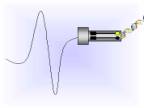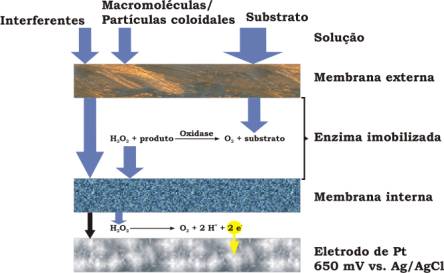 A
biosensor is an analytical device that contains a biological
component warranting specificity and producing a signal
translated by a physical component (optical or electrical).
A
biosensor is an analytical device that contains a biological
component warranting specificity and producing a signal
translated by a physical component (optical or electrical).
Among
biological components that would be part of a biosensor
we can enumerate: antigens or antibodies, enzymes, nucleic
acids, receptors, cells or different organelles. All these
biological species are able to produce specific signals
to different analytes. There are also a great variety of
physical components such as optical fibers, acoustic devices,
piezoelectric crystals or chemically modified electrodes.
Chemical
sensors differ from biosensors by the fact that they don’t
use a biological component in the signal transduction. In
this way, a wide range of materials has been developed in
order to simulate the biological functions. A great advantage
of these sensors is that their production is more affordable
than biosensor’s and that they can be applied in environments
where the bio-components loose their activity, such as high
pH or temperatures changes.
A
variety of sensors and biosensor have been developed in
our group, using different electronic conducting polymers
and transition metal oxides for the detection of some analytes,
such as ammonia, glucose or oxalate. These devices have
potential application and importance in the fertilizers,
food industry and clinical analysis fields.

Schematic
representation of an oxalate bi-membrane biosensor.